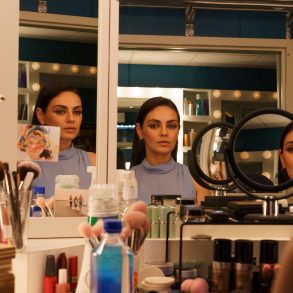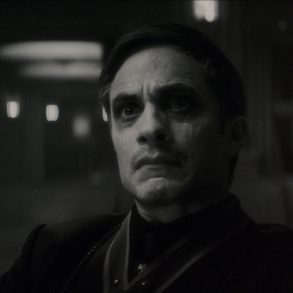Producer Avi Federgreen and I go way back. Our paths crossed for the first time when Sean Cisterna’s Moon Point was making its theatrical release, a project on which Federgreen served as Executive Producer. After that, we crossed paths many times for various different projects. One thing you quickly realize about Federgreen is that he is pretty much everywhere. From super-micro budget short films to relatively large feature film productions, he is actively involved as a producer, promoter, or whatever hat is required to get the film from idea to the big screen and beyond. Prisoner X is his newest project, and he got in touch to discuss the making of the film.
Prisoner X makes its theatrical debut at the Carlton Cinema on April 15th. While the Friday night show with cast Q&A is sold out, there are tickets available for Saturday’s shows with Q&A with the cast. The film will also open at Landmark 24 Cinemas in Whitby and Landmark 24 Cinemas in Kanata.
1. How did Prisoner X come to be a project you got to be involved with?
I met Gaurav in 2005 through a mutual Producer friend, Anna Stratton, as someone I should work with. We hit it off right away! I optioned the first script that I read from Gaurav titled Little Brother. We spent a number of years working on it together and did receive some development money (when there was much more of that available at the time), but in the end we couldn’t get the film made. Six years ago, I had been saying to Gaurav that we need to make a low budget film as it was too hard to raise a lot of money to make films here anymore. Gaurav found a novella by Robert Reed titled Truth that he fell in love with and asked me to read it, which I did along with my producer partner for the film Robyn Bigue. Gaurav contacted Robert and asked if he would be interested in optioning it to us so we could adapt it into a film, and he said yes. Gaurav started writing the script and the rest is history. Essentially, the film has been 5+ years in the making.

2. With the funding available for film projects wavering year after year, planning to make a movie on a shoestring budget often becomes the goal. What strategy and game plan did you craft to make this film something you could actually make?
There is a way to make films with a LOW budget size. Some people are able to make great films at the low budget size and some are not. It starts with a great script that’s written in a way that’s able to be shot on a small budget. With Prisoner X that was hard as a Sci-Fi film is not easy to make on a low budget. The things that cost money are cast size, background performers, stunts, special effects, visual effects, number and size of locations, set dressing and art department costs. Prisoner X had a very reasonable cast size, few background performers and virtually no special effects. However, we did have to turn a raw basement space into our main set and, of course, we did have visual effects (but not a lot). We had a great crew of passionate and hard working people who brought it every day, and a cast that simply were amazing. Michelle, Julian, Damon and Romano all were truly wonderful people and amazing actors. Then there was Gaurav who really knew what he wanted, and as I knew over ten years ago when I first wanted to work with him, he came prepared and was amazing with the actors. Also our DOP Sam Pryce-Phillips and our Production Designer Danielle Sahota, both of whom I had wanted to work with for a while, came on board and were masterful in helping create the world of Prisoner X with Gaurav and knew how to bring it all together for a very small amount of money. We only had 15 days of filming, which also is not a lot of time to shoot an entire movie, but we did it!
3. There is an interesting discussion about the value of crowd-funding for indie productions. You of course utilized crowd-funding in 2014 to help finance the project. Was there a strategy to it, or was it another source of funding that you could utilize?
At a budget level of $275K and the fact that we had received 49% of our financing from Telefilm Canada, who had been a real supporter of the film for a long time, we still had some work to do to get us to the total budget line. We also were fortunate enough to presell the film to Super Channel who really believed in our film as well. However, that still left us a gap in our financing that tax credits alone could not fill. Thus we needed to use Indiegogo to try and fill some of the gap. Crowd funding is hard work and becomes like a full time job, but it’s something we needed to do and hoped that our friends, family, and our audiences would help support our film, and they did thankfully. We are very lucky to have those supporters whom without Prisoner X could not have been made.

4. As a producer, what are some of the most important elements of prospective projects that you look for when creating a plan on making them a reality?
It’s all about the script. Actually, it’s all about the idea within the script. I have read many scripts that might not have been well written; however, within a script, if there is an inherent idea that I think would make for a great film, then I can take that idea and turn it into a great script as long as the writer is willing to go on that journey with me. I tell people all the time that if you have a great idea then you can turn it into a great script. A great idea and a great script will help you get a great director. Having those three things will then help you assemble a great cast. Those four things will help you find the money to make it, and those five things will help get your audience. With Prisoner X, the great idea started with Robert Reed’s novella Truth, which turned into a great script from Gaurav Seth, which then helped us assemble a great cast with Michelle Nolden, Romano Orzari, Damon Runyan, and Julian Richings. It helped us put together the rest of our great cast and an amazing crew, who I call family. All this helped us finance the film with the help of Telefilm, Super Channel, and our Indiegogo supporters. It is because of all of this that the film has had a very successful festival run playing in Sudbury, Calgary, Palm Beach, Arkansas, Brazil and winning prizes at Fantasproto (Portugal) and Worldfest Houston. Now we get to share our film during it’s Canadian theatrical run with our friends, family and audience, and hope they enjoy it as much as we do!
5. Prisoner X is distinctly Canadian, with a stellar cast and crew consisting of many Canadians. Reflecting on Prisoner X, where do you feel the Canadian Indie film industry is headed? In what areas do you feel there is still work to be done?
I think Canada has a great talent pool of writers, directors, actors, crew, composers, etc. I would put them up against talent from any country in the world. We make movies as good or better than anyone. The issue is funding. It’s all drying up, and where once we were making more movies at much higher budget levels, we are now making more and more at the other end of the spectrum; $100K-$1M. It’s a race to the bottom. I am not sure how long we can sustain this. We cannot rely on government money to finance out films anymore, and need to find a way to bring private equity more than ever into the game. Also, we make between 200-300 films a year in Canada, of which only a small amount get distribution. We need to find an answer to this and get more Canadian films on Canadian screens, at the movies and on TV. It’s becoming harder and harder to get our films in theatres. The chains are putting more and more non-Canadian films in theatres, and less and less Canadian content. There are only a few TV Broadcasters that are buying Canadian films. We need to change all that. We also need to continue to help our emerging future filmmakers, because if we don’t, there will be no future.







